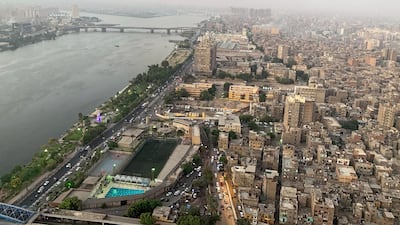S&P Global affirmed Egypt’s “B/B” sovereign credit rating as it expects the country’s foreign exchange reserve buffers and its access to debt markets to help cover its temporarily higher external financing needs.
Growth in the North African country, one of the few economies to escape a coronavirus-induced economic contraction in 2020, is expected to rebound next year, S&P said in a report on May 7.
The credit rating agency affirmed Egypt’s stable outlook amid expectations that temporary pressures on external and government debt metrics will gradually subside from next year, supported by gross domestic product growth and current account receipts, it said.
“We expect that Egypt’s foreign exchange reserves and access to domestic and external debt markets will allow it to cover higher external financing needs and coming maturities,” S&P said.
“We see strong medium-term growth prospects for Egypt, barring the pandemic’s near-term impact, underpinned by the ongoing implementation of fiscal and economic reforms.”
Egypt, the Arab world's third-largest economy, is set to grow by 2.5 per cent this year, according to the International Monetary Fund. The outlook for future business activity is positive as economic conditions are expected to improve amid further loosening of Covid-19 restrictions and an inoculation drive, according to the country's IHS Markit Purchasing Managers' Index report for March.
S&P expects the Egyptian economy to grow by 4.8 per cent next year and by 5.4 per cent in 2023 as a result of higher public and private sector investment as the country emerges from the pandemic.
The government’s efforts to improve the operating environment – such as a new customs law, the settlement of money owed to exporters and industrial land-allocation mechanisms – could support growth in the medium term, the credit rating agency said.
While the pandemic has slightly altered authorities’ initial plans to generate a primary central government surpluses of at least 2 per cent this year and in 2022, recovering growth and lower domestic interest rates should put the debt-to-GDP ratio on a downward track, S&P said.
The agency also expects lower domestic interest rates to encourage the government to issue bonds with longer tenures and reduce its rollover risks. The country’s gross financing needs for the 2021 fiscal year are estimated at about 40 per cent of GDP.
Egypt will also continue to engage with the IMF, either through another programme that is funded or unfunded or, at least, through several technical missions, for example on revenue mobilisation, S&P said.
The country’s tourism sector is expected to fully recover by 2023, S&P said. Tourism is an important economic pillar in Egypt, contributing about 12 per cent of GDP and 10 per cent of total employment in 2019.
In terms of portfolio inflows into Egypt, the country’s expected inclusion on JP Morgan’s widely tracked Government Bond Index Emerging Markets Index in the second half of this year should help reduce volatility in portfolio flows by shifting some investment to passive management while generating lower yields and raising demand for longer-dated debt, the report said.
Egypt’s domestic banking system remains liquid and can increase government debt holdings, despite an already-high exposure of 48 per cent of total bank assets as of January, it said.


